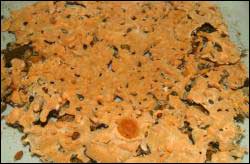Research cruise provides new information on tsunami during survey of remote area
A summer voyage to investigate the causes of one of the most devastating tsunamis in United States history has uncovered new mysteries about biological and geological processes off Alaska. Probing the depths below one of the world’s most important fisheries, scientists with Scripps Institution of Oceanography at the University of California, San Diego, as well as Indiana State University and their
An academic from the University of Sheffield has produced the first glacial map of Britain, which could allow us to better predict climate change in the future. The map is published in the latest edition of the journal Boreas.
Dr Chris Clark, of the University’s Department of Geography, along with colleagues, has compiled over 150 years of scientific discovery to create the Glacial Map, which itself is the result of over ten years’ work. The map identifies over 20,000 geographical

The invasive sea squirt that federal and university researchers discovered on Georges Bank a year ago is flourishing in U.S. waters near the U.S.-Canada boundary, a joint research team announced today following a research cruise that concluded last week.
Scientists from the U.S. Geological Survey (USGS), the National Oceanic and Atmospheric Administration (NOAA), and the University of Rhode Island estimate that mats made of thousands of individual squirts infest a 40 square mi
Drifting buoys & floats weather hurricanes for better storm prediction
While some are still cleaning up from the series of hurricanes that plowed through the Caribbean and southern United States this season, scientists supported by the Office of Naval Research are busily cleaning up valuable data collected during the storms. The rapid-fire hurricanes barely gave researchers time to rest between flights that took them into the hearts of Hurricanes Frances, Ivan, and Jeanne. As pa
Understanding how the air and sea interact and affect each other during hurricane conditions is crucial in predicting the storm track, its intensity, storm surges, and ocean wave fields. When scientists create computer models to help them assess the parameters of a hurricane, they must take into account not only the atmospheric conditions of the storm, but also the conditions in the ocean, including the age and the frequency of waves.
In the current issue of the Journal of the
An international team of scientists is currently evaluating sediment cores collected during the Arctic Coring Expedition, ACEX, conducted under the auspices of the Integrated Ocean Drilling Program (IODP). ACEX, conducted in August and September this year, is an exploration success story. At a press conference in the University of Bremen, Germany, today (16 November 2004) the co-chief scientists of the expedition described the first results from this expedition.
Scientists from